Summary
The best vegetable garden ideas are as follows:
- Grow what you’ll eat
- Consider which vegetables you already enjoy eating
- Consider how much you’ll need for yourself and anyone else you’re sharing your vegetables with
- Start small
- Try a garden bed about 8 feet (2.44 meters) by 10 feet (3.05 meters)
- Use raised beds
- These solve poor-quality soil and drainage, and they’re better if you struggle with mobility
- Grow up using:
- Trellises
- Garden tripods
- Garden arbors
- Living walls
- Vertical planters
- Plant companion plants
- Interplant veggies with ornamentals
- This is helpful if you don’t have room otherwise
- Stagger plantings so you can enjoy the vegetables you like as long as possible
- Use cold frames to extend your growing season
- Plant for winter harvests
- This is useful for cool-season vegetables and areas with milder winters
- Include a rain barrel to capture, store, and use water when it’s dry
- Use insect netting to protect your plants from pests
- Use shade cloth to reduce the sun’s intensity
- Try container gardening when limited on space
- Attract birds with features like bird baths since they help with pests
- Plant vegetables you can eat multiple parts of such as garlic, sweet potatoes, and fennel
Having a vegetable garden is enjoyable, easy, and so rewarding. Nothing tastes better than vegetables you’ve grown in your backyard. No matter where I’ve lived, I’ve always made space for growing them.
The first home I bought had a nice backyard with plenty of space for growing vegetables. It also came with a small 4×8-foot (1.22×2.44 meters) greenhouse the previous owner had built using recycled windows. So, I was able to extend the growing season for some heat-loving tomatoes and pepper plants.
The first year I planted a vegetable garden in that backyard, I also learned about the dreaded white cabbage butterfly and how much damage its larvae can do (and how quickly). The larvae chewed their way through my kale, leaving only the leaf veins.
The next year, I learned about insect netting and how well it protects kale (and other plants in the Brassica family) from the cabbage butterfly. From then on, my kale leaves didn’t have any chewing damage.
Then, I lived in rentals without a backyard for several years, but that didn’t stop me. Instead, I grew my vegetables in containers of various sizes on the deck. In containers, I’ve grown lettuce, kale, tomatoes, green beans, cucumbers, squash, and even sweet potatoes.
I’ve learned you can successfully grow just about any kind of vegetable in the right-sized container. Although they tend to dry out faster and require more watering than plots in the backyard, they’re just out my back door, so I always remember to check on them. Plus, my water source is never far away, so it makes things easy.
So, whether you have a backyard or just a sunny deck or patio, with a bit of planning you can grow vegetables in spaces large or small. Here are some ideas to help you do just that.
1 – Grow What You’ll Eat
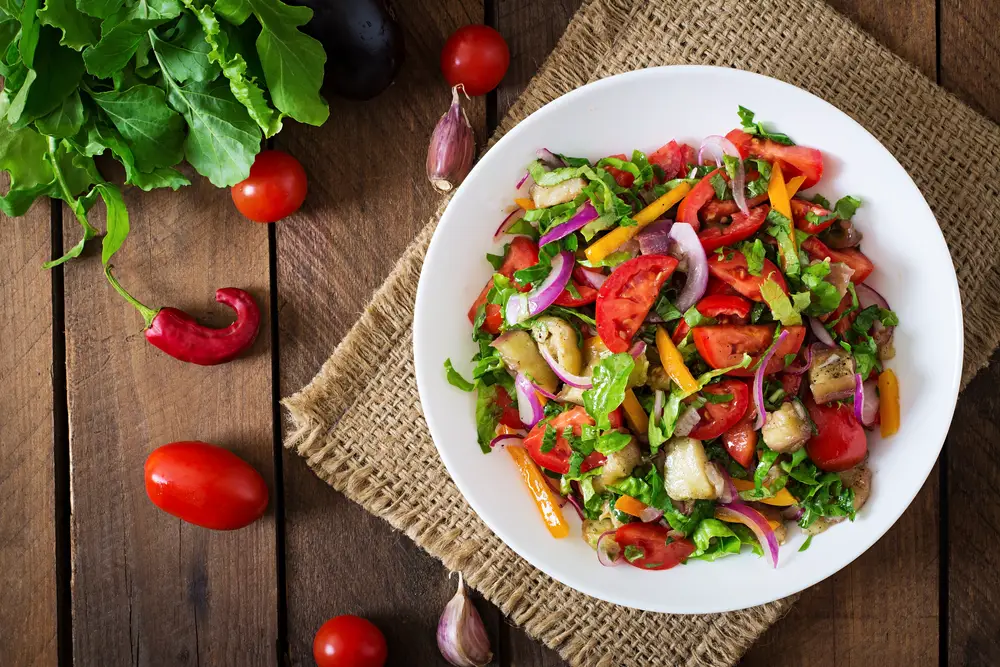
If you’re going to spend time and energy on a vegetable garden, it only makes sense to grow things you’re actually going to enjoy eating, or that you’ll share with your friends.
Choosing Varieties
Do you like tomatoes in a salad, sliced for making sandwiches, or cooked up into sauces for canning? Do you prefer to pickle your cucumbers, eat them with dip, or slice them up in a salad or sandwiches? Or are you like me and love to go out into your vegetable garden and snack straight off the vine (snap peas, anyone?)
Some varieties of tomatoes are better for making sauces (those known as “paste” tomatoes), while others are juicier and tastier for eating fresh in a salad. Cherry tomatoes can be sweet, juicy, bite-sized candies fresh off the vine. And some cucumbers are grown specifically for making pickles (“pickling” cucumbers), while others grow to a larger size and are perfect when sliced into a salad.
So, when you choose vegetable varieties to grow, consider how you like to eat and cook with them. When you buy seeds or plants, read descriptions of different vegetables. Information on the tags will usually describe how the vegetable tastes and how best to use it.
You can always experiment with different tomato varieties. Cucumber varieties labeled for pickling are harvested when they’re small and tend to grow tougher skin or taste more bitter if left on the vine to grow too large.
How Much To Grow
You’ll also need to think about how many plants of each variety you’ll need to grow. In other words, how many people will your vegetable garden be feeding? You want enough to go around but don’t want too much to deal with. We all know that one gardener who has so many zucchinis they have trouble giving them away (and if you don’t know them, you definitely don’t want to be them, either!).
Additionally, perhaps you like pickling or canning. If so, you’ll want to grow plenty of the same thing. This lets your vegetables ripen all at once, giving you enough for your favorite recipes.
2 – Start Small
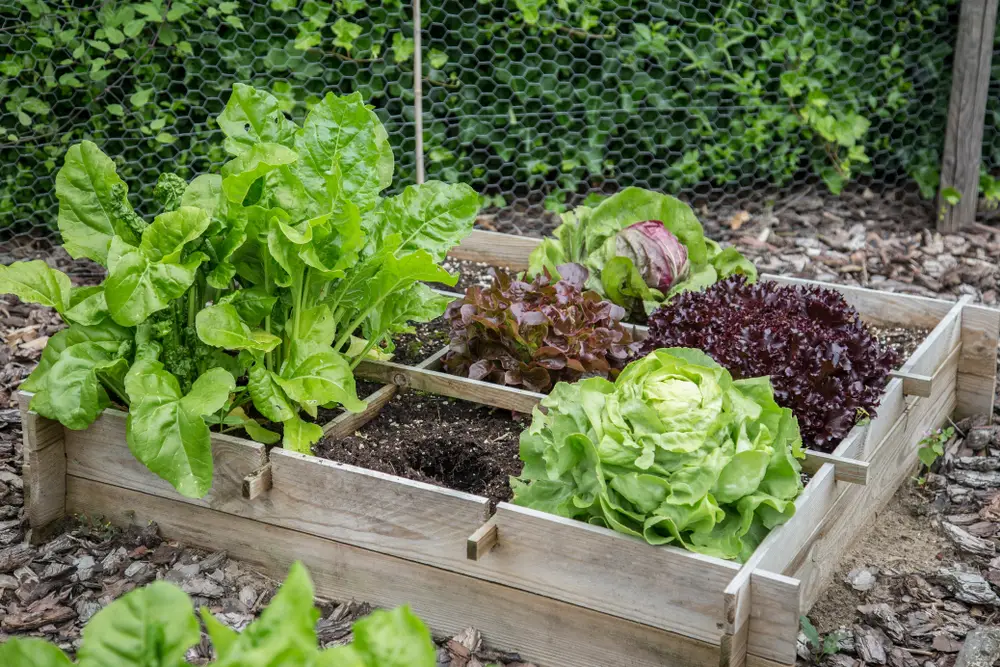
It’s always a good idea to start with a smaller vegetable garden bed if you’re new to it.
It’s easy to get excited about growing your own food! But planting too many vegetables at once can overwhelm you, especially if they take more time and effort to manage than you were expecting. Your vegetable garden may end up neglected, and you might not get the harvest you were hoping for.
So, to avoid disappointment and increase your success, start with a bed about 8 feet (2.44 meters) by 10 feet (3.05 meters). That will give you enough room to grow a good variety of vegetables in a manageable space.
3 – Use Raised Beds
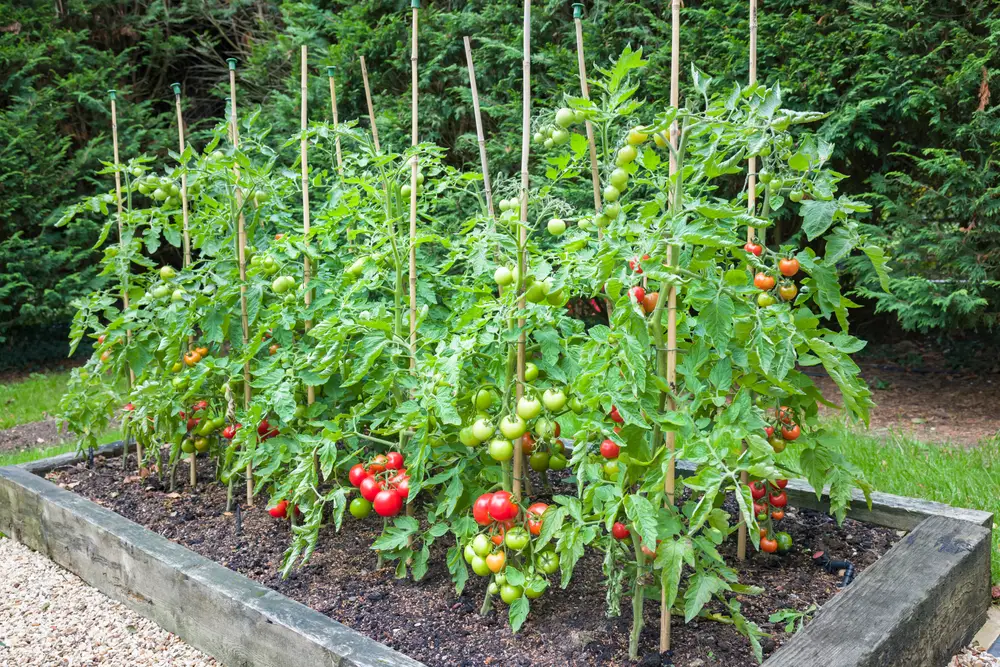
Raised beds can solve several challenges.
One is poor-quality soil or drainage. Raised beds solve these issues because you can create your own conditions inside them.
Raised beds are also helpful if you have mobility challenges. For example, maybe you can’t bend over easily. If so, you can build your raised bed to a height that makes gardening more comfortable.
But maybe you’re worried about how a raised garden bed will look in your backyard. The good news is you can design them to be integrated into your backyard as an intentional architectural garden feature.
4 – Grow Up

Maybe you’ve determined you need a large area for your vegetable garden, but you’ve also discovered you don’t have such an area. You can always grow vertically to get that big harvest from a smaller space.
Choose varieties like peas, pole beans, cucumbers, or climbing Malabar spinach. You can train them so their vines grow up tall structures, such as a:
- Trellis
- Large tripod made of wooden or metal stakes
- Garden arbor
These varieties are easy to harvest because they grow nice and tall. As an added bonus, the more you pick them, the more they’ll produce!
Living Walls
Let’s say you have a patio or deck with a nice sunny wall. You can grow vegetables there, too, turning it into a “living wall.” To do so, you’ll construct a series of container-like spaces to grow smaller-sized vegetable plants like lettuces or dwarf kale. You can even make these containers from a variety of materials to suit your existing decor.
One of the easiest and cheapest ways of installing a living wall is to start with a wooden shipping pallet. Secure the pallet to your wall, and use the open spaces between the slats to build long planter boxes.
Vertical Planters
You’ll find lots of terms to describe the idea of a vertical planter, such as tower garden, grow tower, and plant tower. Whatever name you choose, they’re all basically the same idea (see below). As a side note, sometimes these terms are used specifically for hydroponic systems that use nutrient-rich water without any planting mix to grow plants.
Vertical planters use potting mix and can be a single tall container with a series of openings around the outside as planting pockets, or it can be a series of smaller integrated stackable pots. There are several ready-made designs on the market, or you can make your own using a piece of rebar and a few terra cotta (or plastic) pots.
5 – Plant Companion Plants
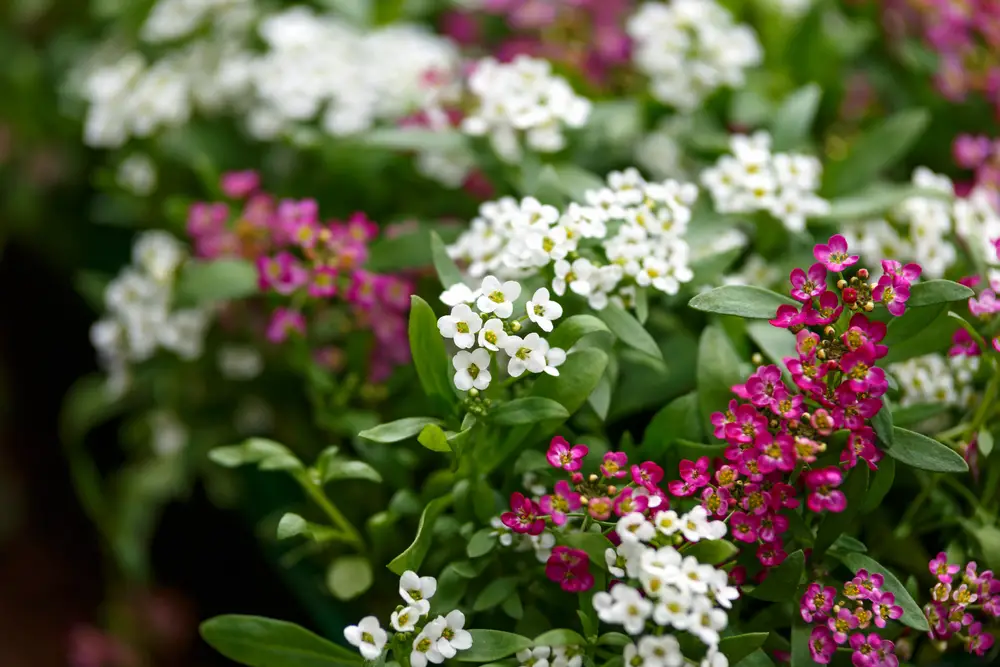
The science is still uncertain about planting one plant close to another to protect from pests (e.g., plant basil with tomatoes.) However, several flowering plants are known to attract pollinators or predatory insects that will eat insect pests such as aphids.
You can plant these flowering plants around or amongst your vegetables to encourage beneficial insects to come to your garden. Some examples include:
- Sweet alyssum (low-growing annual; attracts ladybugs that eat aphids)
- Dill (an annual that readily self-seeds and attracts ladybugs)
- Yarrow (a perennial that attracts bees for pollination)
- Poached egg plant (low-growing annual that attracts hoverflies that eat aphids)
6 – Interplant Veggies With Ornamentals
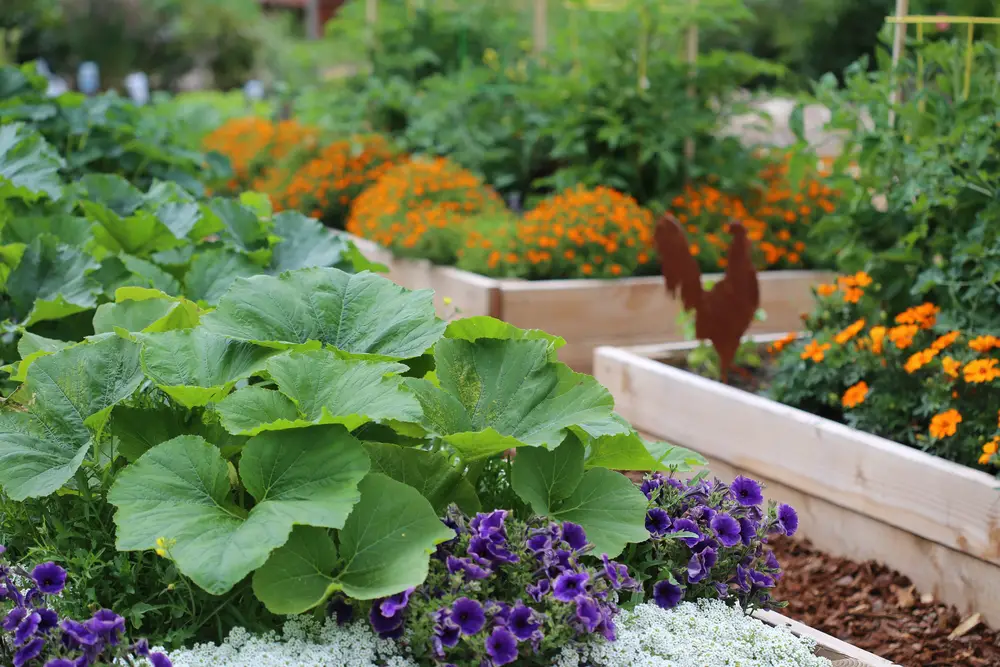
If you don’t have room for a dedicated vegetable garden, you can just plant vegetables in amongst your existing ornamental garden beds. There are lots of vegetables that are attractive as well as edible.
Some examples include:
- Swiss chard varieties with stalks in shades of yellow, red, or pink
- Hardneck garlic that grows beautiful flower heads called scapes (which you can cut and make a delicious addition to stir-fries)
- Pole beans such as Purple Peacock or Scarlet runner beans
- Artichokes are perennials that grow back every year, producing a flower resembling a giant thistle.
- Purple cabbages
7 – Stagger Plantings For A Longer Harvest

Some vegetables, like lettuce heads or radishes, don’t have a very long harvest period once they reach maturity. Once you pick them, they’re done.
Instead of having all your iceberg lettuce heads ready to eat at the same time, you can stagger your seeding times at the beginning of the season. Plant just a few seeds one week, then wait 7-10 days before planting a few more, then wait again before planting some more. That way, some will be ready to harvest, while the staggered plantings will be ready a little later.
This staggered-planting strategy works well for things like bush beans, radishes, bunching lettuce (as opposed to leaf lettuce), kale, and Swiss chard.
8 – Use Cold Frames
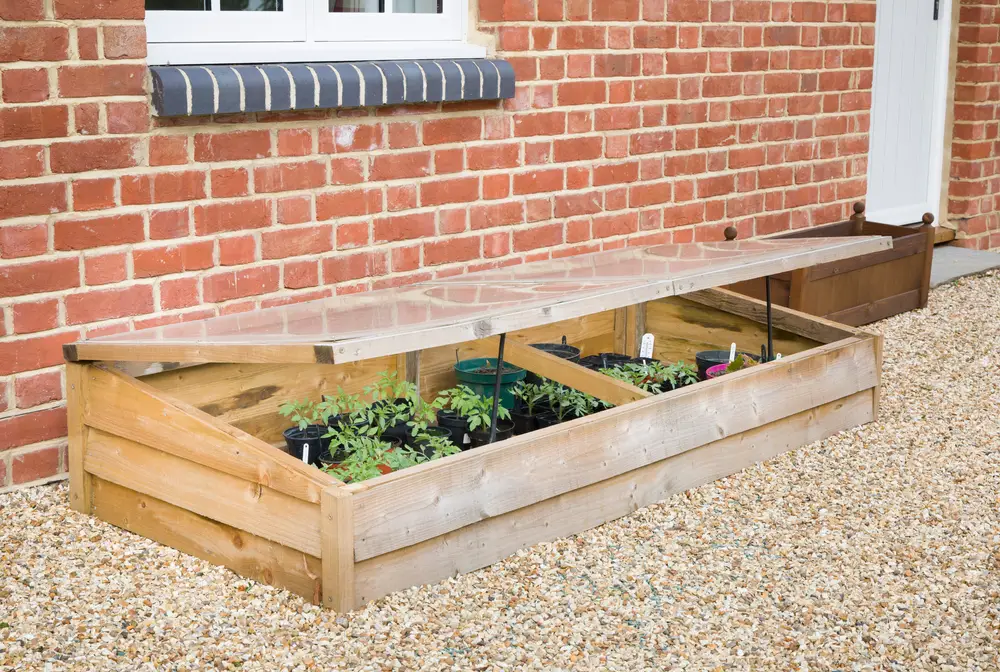
A cold frame is a simple wooden box that’s open to the soil on the bottom, with a clear, solid top. It acts like a miniature greenhouse to trap heat from the sun, warming the soil, air, and any plants growing inside.
Gardeners use cold frames for planting cool-season crops and protecting them from frost and severe temperatures early or late in the growing season. Because they warm the soil inside, you can use them to sow seeds several weeks earlier, keeping your plants protected and growing longer into the fall or early winter.
9 – Plant For Winter Harvests
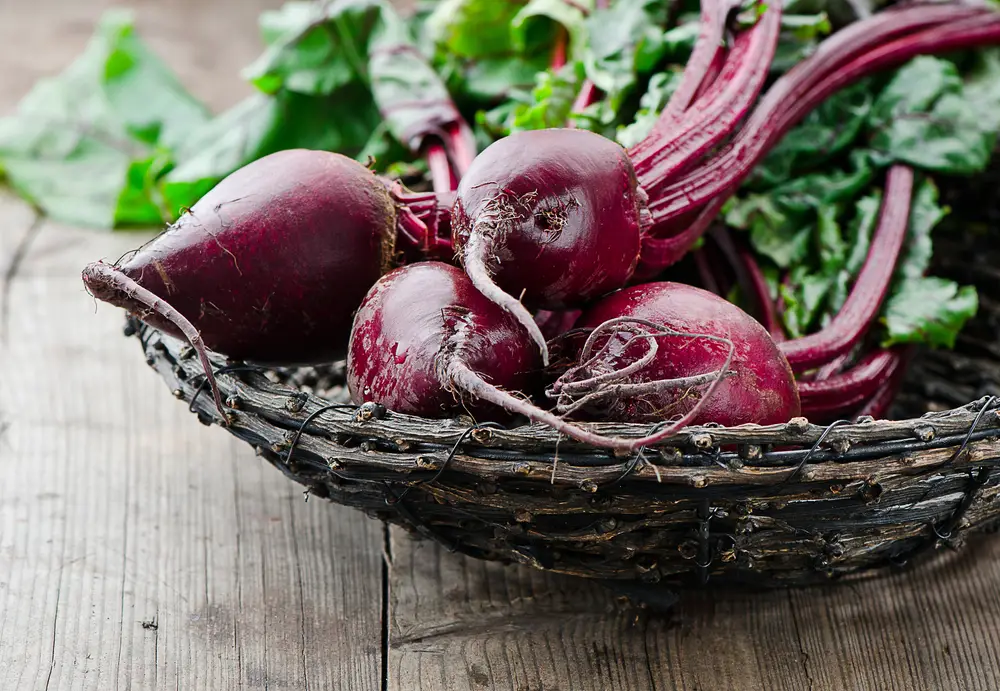
In regions with milder winters, you can plant certain vegetables in late summer so that they mature before the days are short and temperatures cool down. They will stop putting on new growth at that stage, but you can leave them in the garden to harvest well into the winter months. A cold frame can extend the harvest season in regions with colder winters.
Planting for winter harvest works best for cool-season vegetables, those that can tolerate a light frost, or root vegetables that are protected underground. These include root vegetables (carrots, beets), Brussels sprouts (which actually taste sweeter if harvested after a frost), kale, and Swiss chard.
10 – Include A Rain Barrel
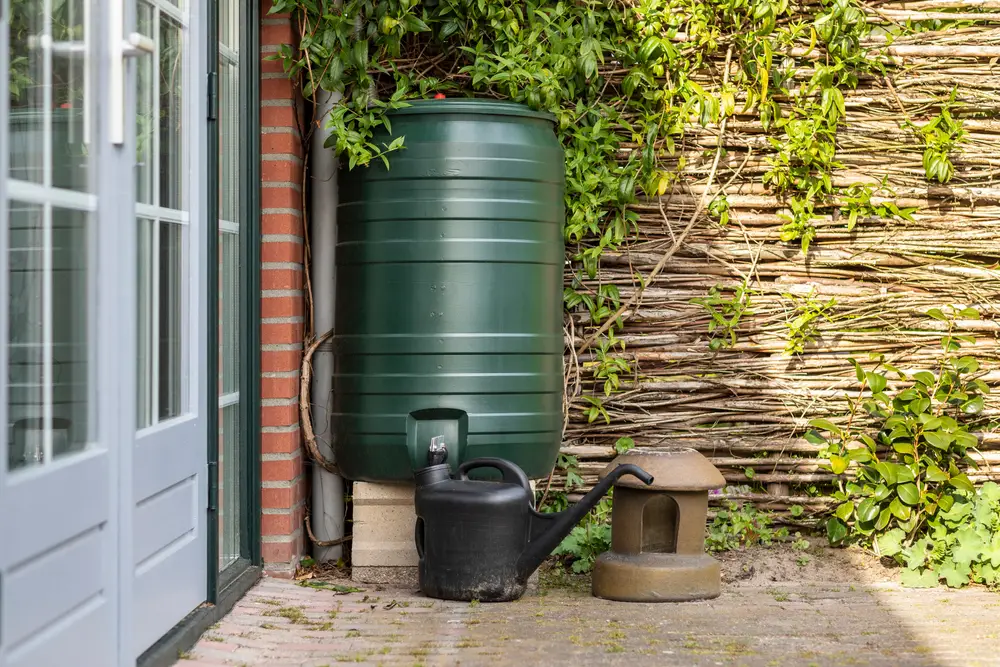
Rain barrels are a useful addition to any garden design, as they capture and store rainwater for use during drier times. They can be especially useful in regions that receive infrequent but heavy rainfalls.
Many options are available on the market, most designed to capture runoff from your rooftop. You can install others to capture runoff at soil level in regions prone to heavy rainfalls and local flash flooding.
11 – Insect Netting

You will always have challenges in your vegetable garden from natural insect pests. Many lay eggs on your vegetable plants’ leaves or the surrounding soil. Young insect larvae damage those leaves or roots by chewing on them. Other insects do damage when the adults feed on the foliage.
Fortunately, you can control many of these insect pests without using chemicals of any kind. Instead, you can block the adults from accessing the plants to feed or to lay their eggs with a product known as “insect netting.” You lay this netting over hoops or some other support to cover the plants right down to soil level, preventing the adult insects from getting in.
The netting keeps insects out but still lets light and rain through to your plants. It comes in different weights and mesh sizes. The finer the mesh (i.e., the smaller the holes), the smaller the insects it will block out.
You can also use old gauze curtains in place of insect netting.
12 – Shade Cloth

Shade cloth is a type of netting that reduces the sun’s intensity reaching your plants. It doesn’t cut out all the sunlight (like an umbrella). It just reduces the strength of the sun that does reach your plants, keeping conditions a little cooler. Farmers use it to protect crops from excessive heat generated by intense sun and high air temperatures.
You can also use it in a sunny vegetable garden to create some shade for growing varieties that don’t like too much heat (e.g., lettuce). In regions that experience intense summer heat, it can provide some shade to vegetables that like a lot of sun but not necessarily extreme heat.
For example, tomatoes and cucumbers like a lot of sun, but they won’t set fruit in extreme temperatures. Shade cloth can keep temperatures cooler and allow these crops to grow with less heat stress.
You can use shade cloth in your vegetable garden to provide space for cooler-season crops throughout the growing season or as a temporary measure when forecasts show rising temperatures.
13 – Try Container Gardening
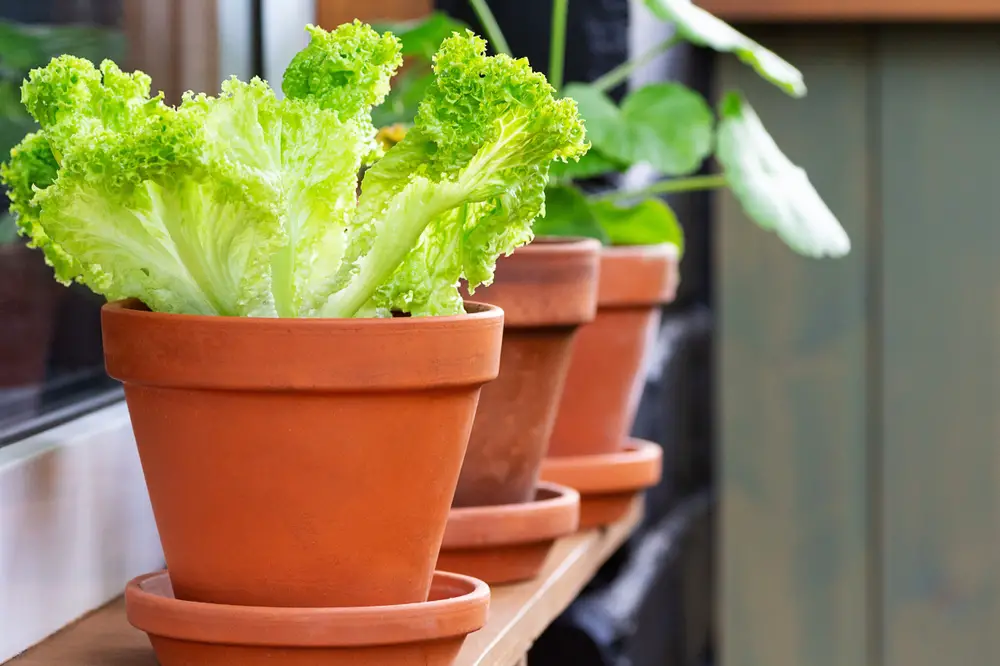
Even if you don’t have enough space in your backyard to dedicate a space to growing vegetables, or maybe you don’t even have a backyard, you can still grow vegetables in containers.
You can grow many varieties of vegetables in containers, too. You’ll just need to be more selective in what you grow. Look for varieties labeled “dwarf” or even “good for containers.” Smaller varieties will require less space and soil to grow in.
Types Of Containers
You can use just about any type of container for growing vegetables as long as it can hold soil at least 6 inches (15.24 centimeters) deep. Window boxes, hanging baskets, basic plastic pots, more decorative glazed pots, or wooden planter boxes are all perfectly good options. Basically, you can use anything that can hold soil and let water drain out.
For example, you can use window boxes for smaller things like “cut and come again” lettuce. These lettuce grow several individual leaves that can be harvested a few at a time and grow back over several weeks rather than growing into a single head with several leaves harvested all at once.
There is also a variety of tomato called Tumbler that can be grown in a hanging basket.
14 – Remember The Birds
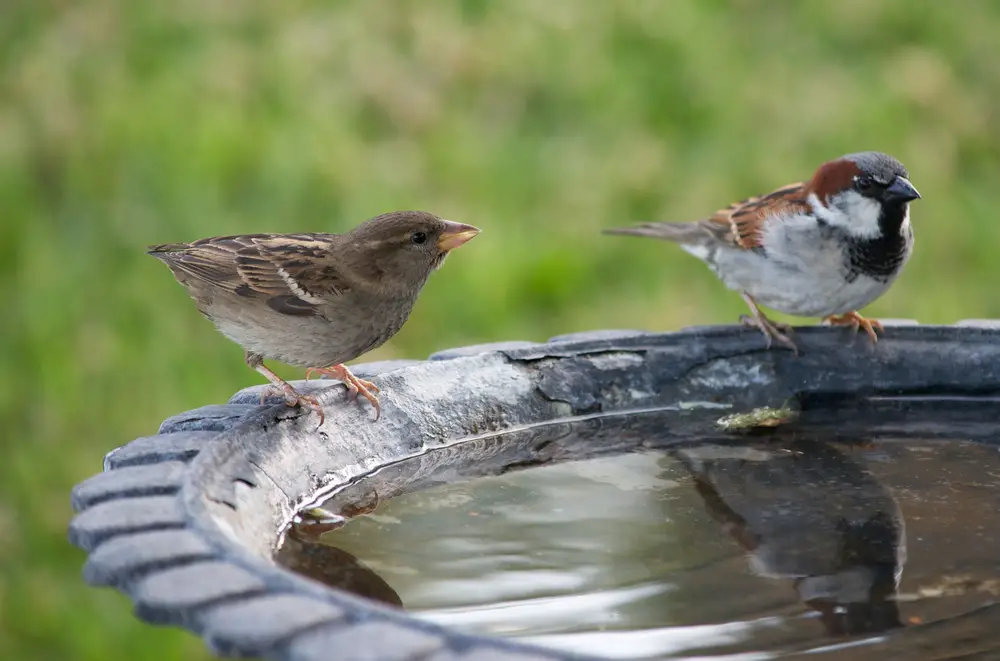
Backyard birdwatching is a popular hobby. Maybe it’s already one of yours. Either way, attracting insect-eating birds to your backyard is also a great way to control insect pests on your garden plants. Birds help control things like aphids, slugs, and chewing caterpillars in your vegetable garden.
Many plants produce berries and seed heads that birds like to eat, but the fastest way to bring birds into your garden is to provide them with a water source. Bird baths, small fountains, or water features are all good options to provide water sources.
15 – Plant Vegetables That Give Twice
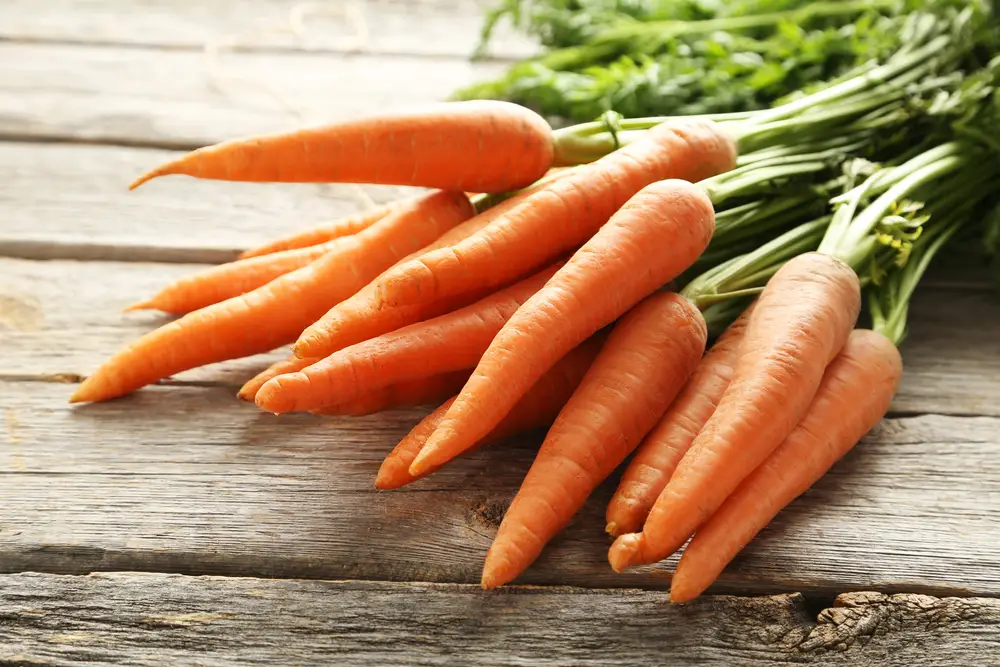
Whatever space you use for growing vegetables, you can increase your harvest by planting varieties that do double duty. We usually think of vegetables as just the portion we harvest, like lettuce leaves or potato tubers. But there are lots of vegetables you can eat more than one part of, giving you more harvest from the same space.
Here are some examples of vegetables that give twice:
- Hardneck Garlic: You can eat the garlic bulb and attractive flower (called a “scape”) of hardneck garlic (softneck garlic doesn’t produce a scape), even cutting and frying it in stir-fries or serving over pasta.
- Carrots And Turnips: You can eat the roots and the leafy tops in salads or use them to flavor soups.
- Beets: You can eat the roots and the leafy tops, the “beet greens,” which are similar to spinach.
- Sweet Potatoes: You can eat the tubers and leaves of sweet potatoes (not yams) raw, steamed, or pan-fried.
- Radishes: You can eat the roots, and radish leaves make a peppery addition to green salads.
- Fennel: Fennel’s bulb-like base and long pale stems are likely the better-known edible part of the plant, but you can use its fine leaves like dill, and you can use its seeds to flavor a variety of foods.
Don’t cut all the leaves off one plant if you decide to use the leafy tops of root vegetables. Instead, cut a few leaves off several plants. You need to leave some leaves to support the growth of the root vegetable below the soil.


